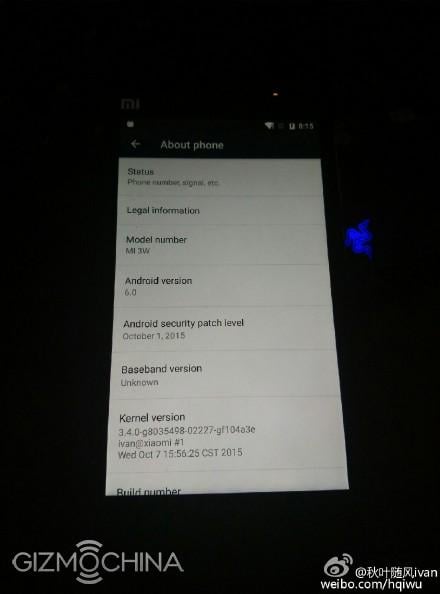At yesterday’s launch of the Mi4, Lei Jun boasted the phone’s design. Was he telling the truth?
Lei Jun explained that making a round rear cover can allow the Mi4 to use a more powerful battery and have a camera that barely points out.
The rear cover was manufactured in a 9-step process using IMD technology。 As a result, it is 0.06mm thin. A lot of cell phones follow this kind of design such as the Honor 6.
The Mi4 sports a steel frame but the SIM card holder is made of plastic. The colors are still the same regardless of the material.
The plastic rear board is fastened tightly. We can also see a signal overflow outlet which is connected to the gap between the steel frame and the plastic case to maintain a strong signal.
There is a sticker on the bolted cover that implys that warranty does not apply after the phone is disassembled. But replacing the rear cover with a wooden won’t won’t influence the warranty.
Right now, we are looking at the China Unicom Edition. The 4G edition should go online in September. If the China Mobile 4G edition supports 5 modes, then Xiaomi should make some changes on the 4G Mi4’s antenna design.
The camera’s flash bulb is screwed into the phone’s plastic outer shell. A common industry trick is to put the flash bulb on the mother board or on the rear cover. This is the first time I have seen a flash bulb this big.
The battery was produced very neatly. It uses a SONY chip customized by Feimaotui. It’s glued to the mid frame too strongly.
The power and volume buttons. The texture of the Mi4’s buttons are just as good as the Mi3’s.
The Mi4 sports a 13mp rear-facing camera with a 1.8 aperture. It uses the Sony IMX 214 sensor.
Xiaomi put the antenna, vibrator, microUSB port, microphone, and LED light in a single soft printed circuit board.
The microUSB was made using the 6-pin design. The standard microUSB port uses a 5-pin design while the Find7, which supports a flash charger, uses the 7-pin design. The Mi4 supports a Qualcomm 9V/1.2A charger.
Lei Jun said that the Mi4 features a glove mode thanks to the ATMEL MXT641T chip, which can prevent any interference caused by wet hands.
Most of the chips on the mother board are covered by protective cases.
The Dongqi 16GB eMMC flash memory card which was manufactured last fourth quarter. It uses 19nm technology and decreases the area by 22%. Along with the Snapdragon 801, it can read and write at the eMMC5.0 level.
The Qualcomm WCD9320 audio chip. It has all the codecs necessary for music and phone calls.
The Qualcomm WCN3680 WiFi, Blu Ray, FM radio chip. It supports 802.11ac 5GHz WiFi and Blu Ray 4.0 which uses less power.
The Qualcomm WTR1625 chip does not support LTE interent but supports GPS.
Samsung 3GB RAM chip + Qualcomm MSM8X74AC 2.5GHz quad-core processor chipset package. We have previously said that the Mi4 China Unicom Edition does not support LTE internet.
AVAGO ACPM-7600 amplifier.
The Qualcomm PM8941 power management IC which supports QuickCharge2.0. According to Qualcomm, this chip can charge 60% of a 3300mAh battery in just 30 minutes.
The Qualcomm PM8841 power management chip which can be used together with the PM8941.
Infrared transmitter and receiver. Actually infrared was popular in Windows Mobile for a while but became obsolete with the arrival of Blu Ray.
The steel was cut using a 1.35mm CNC cutting process.
The most important part about how the Mi4’s frame was built is that its made of 304 stainless steel. It was made in a 193 step process.
Overall, compared to the iPhone 4s which Lei Jun mentioned as an example, the Mi4’s steel frame is much better.
The injected antenna overflow outlets on the bottom and top of the Mi4 are designed much better than the iPhone 4. In addition, the speakers and micr-USB port are placed in a neat arrangement.






























![First Look At Windows 10 On Xiaomi Mi4 [Pictures]](https://www.gizmochina.com/wp-content/uploads/2015/12/xiaomi-mi4-windows-10-08.jpg)





